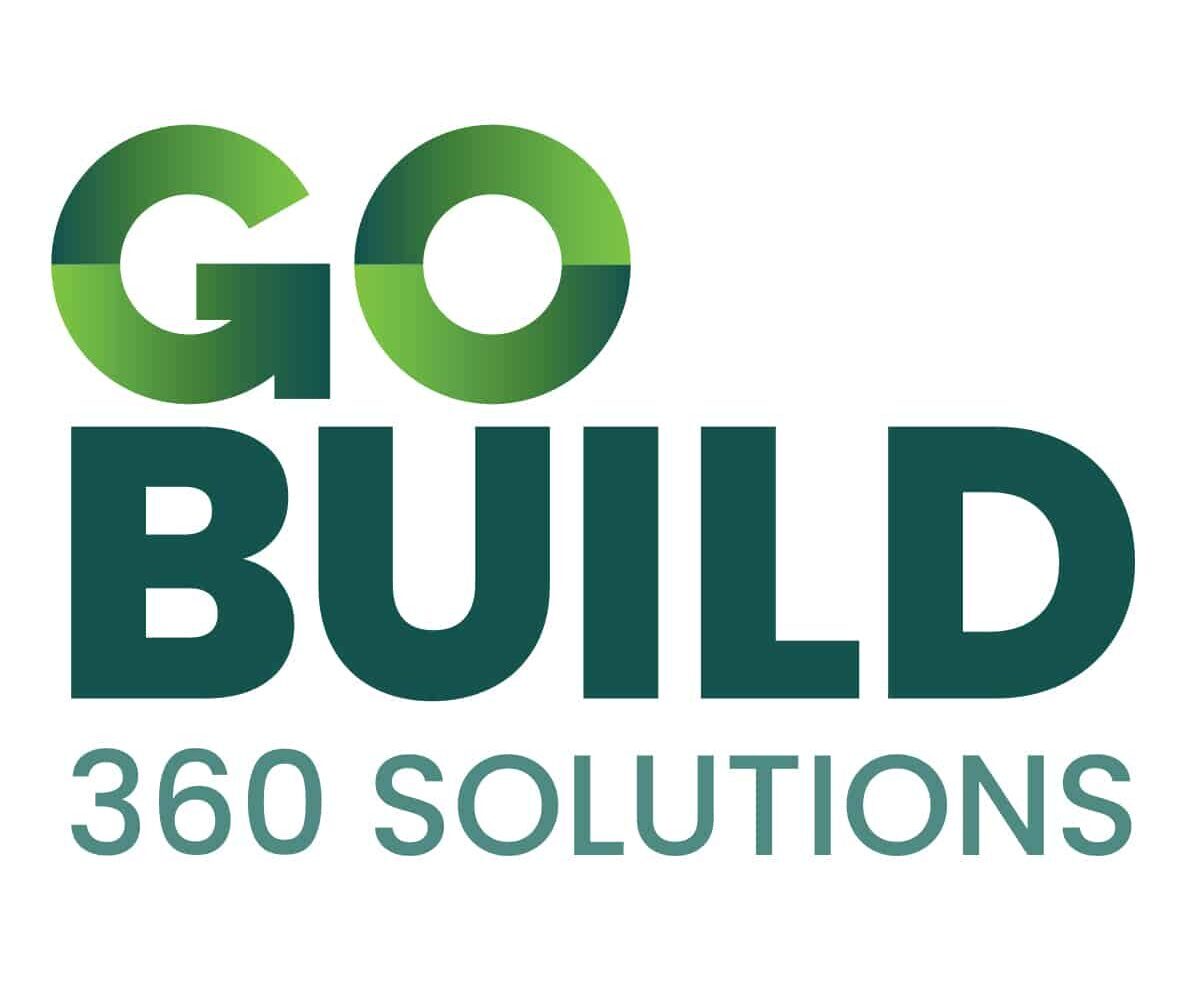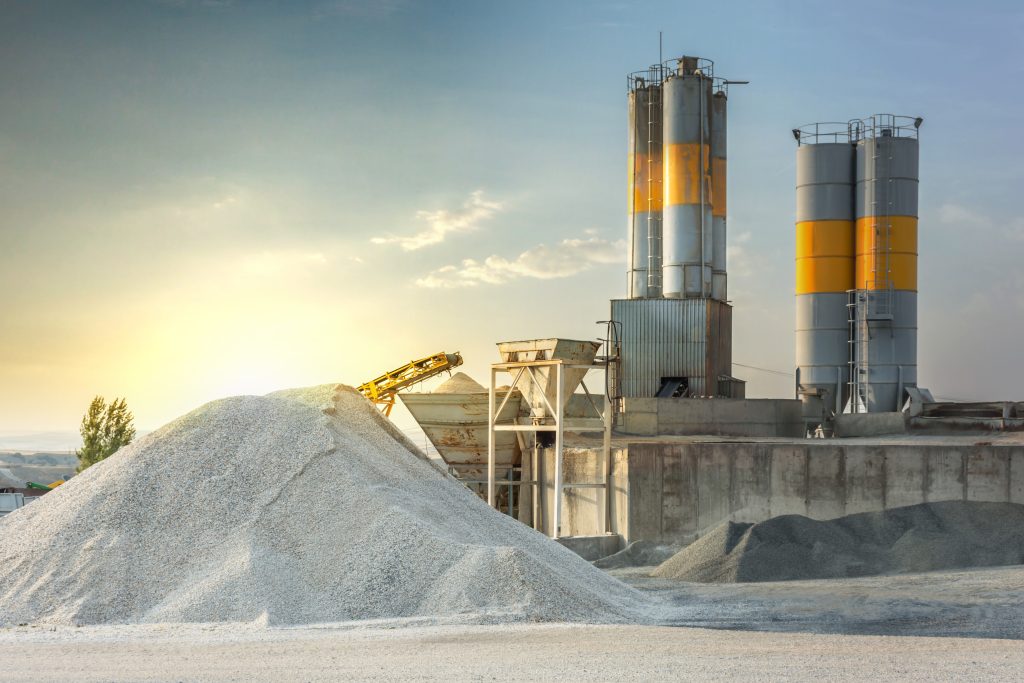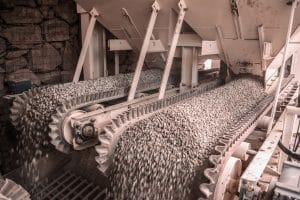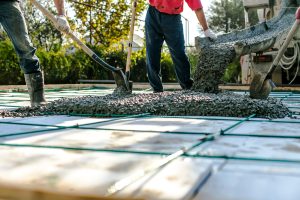Concrete, one of the most versatile and durable building materials, has a history that stretches far beyond the modern era.
Its roots can be traced back to ancient civilizations, long before its use in iconic structures like the Roman Colosseum or the Great Wall of China. This evolution, culminating in the advent of ready-mix concrete in the early 20th century, has revolutionized the construction industry. This article will explore the fascinating journey of concrete from its earliest forms to the modern ready-mix solutions of today.
So, grab your hard hats, and let’s hop into the time machine!
Concrete Origins: Ancient Civilizations
Around 6500 BC, traders known as the Nabataeans or Bedouins, residing in southern Syria and northern Jordan, constructed the first known concrete-like structures.
By 700 BC, these early builders had unearthed the potential of hydraulic lime. Kilns were constructed to combine this lime with volcanic ash, resulting in water-resistant cement. This cement became a crucial component in the creation of mortar for constructing houses, floors, and subaqueous cisterns.
The early builders flourished in their arid surroundings with protective shelters and a way to store water.
Keeping it dry in the desert
The Nabataeans were meticulous about maintaining a dry concrete mixture.
They realized that too much water led to structural weaknesses by forming voids. To ensure the solidity of their structures, they employed a technique known as tamping to compress the concrete prior to its hardening. This process facilitated the necessary chemical reactions during cement hydration and bonding.
Now, let’s fast forward a few thousand years to when the Egyptians and Chinese make their mark.
What Did Ancient Egyptians Use to Build Monumental Structures?
Around 3000-2000 BC, the brilliant Egyptians made use of a basic yet effective form of concrete to construct their iconic pyramids.
They mixed straw and mud from the fertile banks of the Nile River to create sturdy bricks that served as the foundation for these awe-inspiring monuments. And then, they combined gypsum and lime to create strong, binding mortars that securely held the bricks together.
Meanwhile, In China
At the same time, the Chinese came up with a fascinating solution when constructing the famed Great Wall.
The Chinese utilized a unique form of cement, which incorporated a surprising ingredient – sticky rice soup! By blending this unconventional ingredient with slaked lime, the Chinese were able to create a strong, long-lasting mortar. The Great Wall stands tall to this day, all thanks to soup.
But, no early civilization has baffled scientists as much as the Romans with their contributions to concrete.
Roman Concrete: Lost and Found
The Romans made significant strides in construction and were the first to use concrete in the way we do today.
They created robust, self-healing concrete to build iconic structures like the Roman Baths, the Pantheon, and the Colosseum. Their mixtures, similar to those of the Bedouins, combined hydraulic lime with volcanic sand. They also experimented with additives like animal fat, blood, and milk to enhance the concrete’s properties.
And it worked!
The Lost Secrets of Rome
With the fall of the Roman Empire in 476 AD, these advanced techniques were lost.
It wasn’t until 1414, with the discovery of Roman manuscripts detailing their unique concrete blends, that interest was rekindled. This rediscovery sparked a new era in construction. As engineers and builders began to revisit Rome’s lost methods, concrete was re-established as a versatile material for crafting durable structures.
Makes you think about where we would be today if those recipes hadn’t been lost for a thousand years.
Middle Age Crisis: A Step Backward
In the Middle Ages, concrete usage declined, despite being frequently employed in fortifications and castle constructions.
The techniques and materials available at the time couldn’t match Roman advancements. Nevertheless, knowledge and techniques for producing concrete were preserved, paving the way for a future resurgence.
The Industrial Revolution and the Birth of Modern Concrete
The 19th century, marked by the Industrial Revolution, saw a significant leap in construction technology with the invention of Portland cement.
Although Joseph Aspdin, a bricklayer from Leeds, England, patented a version of Portland cement in 1824, it was his son, William Aspdin, who made the groundbreaking discovery. William found that by grinding the overbaked “clinkers” his father discarded, he could create a cement that rivaled Portland stone in hardness and durability.
This cement, produced by heating limestone and clay in a kiln and grinding it into a fine powder, revolutionized concrete production and remains the industry standard today.
Portland cement and the creation of reinforced concrete
Portland cement revolutionized concrete production, enabling the creation of stronger, more durable structures. This development was a response to the Industrial Revolution’s demand for more robust and efficient building materials. It paved the way for the evolution of modern concrete technology, transforming the landscape of architecture and construction.
Another significant development during this period was the use of reinforced concrete.
This technique involves embedding steel bars within the concrete, significantly enhancing its strength and durability. The innovation of reinforced concrete expanded the possibilities of construction, allowing for the creation of larger and more complex structures such as bridges, tunnels, and high-rise buildings. It also improved the resistance of structures to various stresses and strains.
A major milestone in the evolution of construction technology.
The Advent of Ready-Mix Concrete
The dawn of the 20th century brought about a significant innovation in the construction industry: the introduction of ready-mix concrete.
This type of concrete, a blend of cement, water, and aggregates, is produced in a factory setting and then transported to construction sites via trucks. Ready-mix changed construction forever. Prior to its invention, gathering raw materials and manually mixing them on construction sites required immense labor and time.
For the first time in history, pre-mixed concrete was specially formulated in factories under controlled conditions. That meant builders could order a consistent mix suitable for various construction projects.
Modern Innovations and the Future of Concrete
In recent years, the industry has seen significant advancements, including the development of pre-stressed and high-strength concrete.
Pre-stressed concrete involves pre-compression before load application and allows for longer spans and thinner structures.
High-strength concrete, created using specialized techniques and materials, can bear much higher loads than traditional concrete.
These innovations have broadened the scope of construction, enabling more complex structures and contributing to sustainable and resilient built environments.
Going green
The industry is also actively addressing environmental concerns.
Manufacturers are reducing CO2 emissions through alternative fuels and raw materials, recycling concrete waste, and exploring carbon capture technologies. The development of ‘green’ concrete, incorporating recycled materials like fly ash or steel slag, is another step towards sustainable production.
Looking ahead
Looking ahead, the innovations on the horizon are staggering.
Potential developments include:
- Nanotechnology for ultra-high-performance concrete
- Self-healing concrete, and
- 3D printed structures.
These innovations could significantly enhance strength, durability, and sustainability while reducing construction time and costs. The integration of smart technologies could also lead to “intelligent” concrete, capable of monitoring its own condition and the environment, providing valuable data for maintenance and safety.
These advancements promise to revolutionize the construction industry, transforming how we build and maintain our built environment.
Conclusion: The Evolutionary Journey of Concrete
From the ancient Nabataeans to the modern era, the journey of concrete is a testament to human ingenuity and resilience. This story is one of continuous innovation, of learning from the past while looking toward the future. As we continue to push the boundaries of what is possible with concrete, we honor the legacy of those who came before us. And more importantly, pave the way for future generations to build a more sustainable and resilient world!




